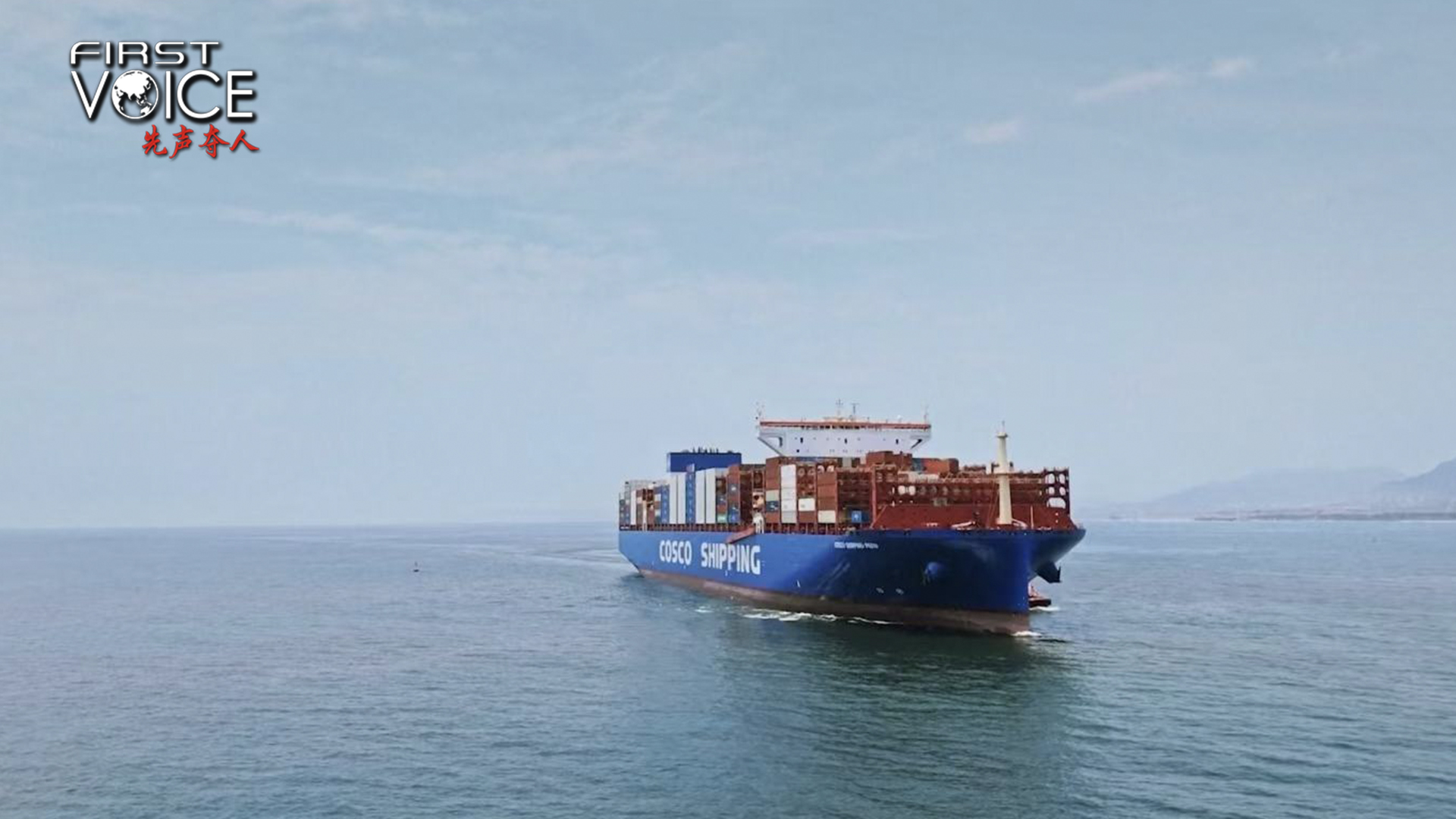
Editor's note: CGTN's First Voice provides instant commentary on breaking stories. The column clarifies emerging issues and better defines the news agenda, offering a Chinese perspective on the latest global events.
Earth has the power to physically shrink the vast water between Asia and South America. Humans do it differently.
Roughly 80 kilometers from the Peruvian capital Lima stands the newly inaugurated Chancay Port – a project under the Belt and Road Initiative and the first smart and green port in South America. When its first phase is completed, the port will reduce the shipping time from Peru to China to 23 days, cutting logistics costs by at least 20 percent. Connected to the Pan-American Highway by tunnel, goods from across Latin America would be able to efficiently transported to the port and then, through sea lanes, to Asia. As the American-Peruvian business author Edgar Perez said in an interview, nobody wants their avocados to spend 40 days on the road before getting to the market. This new port, as he said, "is going to create a seismic change in how the economic structure is going to be working for Latin America."
In his video address at the port's inauguration ceremony, Chinese President Xi Jinping said that "what we are witnessing is not only the root and blossom of the Belt and Road Initiative in Peru but also the birth of a new gateway that connects land and sea, Asia and Latin America."
Many see the burgeoning relationships between China and countries in Latin America as contradiction to conventional wisdom. With the Pacific Ocean sitting in between, unreachable by land, facing different political realities, they aren't the most natural partners for cooperation. However, since 2000, China-Latin America trade has skyrocketed to nearly $490 billion from $12 billion. The number is expected to surpass $500 billion in 2024. China has been Peru's largest trading partner and largest export market for 10 consecutive years. Chancay Port will be the starting point for a new land-sea corridor between China and Latin America.
However, it is perhaps the wisdom passed down from long history that has made both side eyeing for what's most important – development for the country and welfare for the people. As important members of the Global South, their cooperation benefits both their domestic development and global prosperity.
As the poll from "Peru's Favorability towards China in 2024" shows, respondents are expressing hope for building a "Peruvian model" for China-Latin America relations and fostering high-level cooperation among "Global South" countries. 93.6 percent of them are looking forward to deepening practical cooperation in various fields between China, Peru and other Latin American countries, especially in science and technology, economy and trade, and education.
And as the world grows increasingly volatile due to various conflicts and ideological differences, there's a growing urge among countries from the Latin America and the Caribbean to seek solidarity in order to achieve development. In an interview with researcher Keron Niles from Trinidad and Tobago, expanding the scope of cooperation is viewed as a priority. He believed that, to maintain stability and growth, it's important to lessen dependency on a specific partner, but to "increase our trade with other parts of the world, including our valuable partners in the Global South."
As Chinese President Xi Jinping referred to at the 31st APEC Economic Leaders' Meeting in Peru, "a man of virtue, while establishing himself and pursuing success, also works to help others establish themselves and succeed." Real development can only be achieved when all countries advance together. The world is big enough for every country to find their own paths forward and for all to cooperate for a common goal.
No hurdle is too big to be overcome, not even with the great Pacific Ocean in between.

 中文
中文



